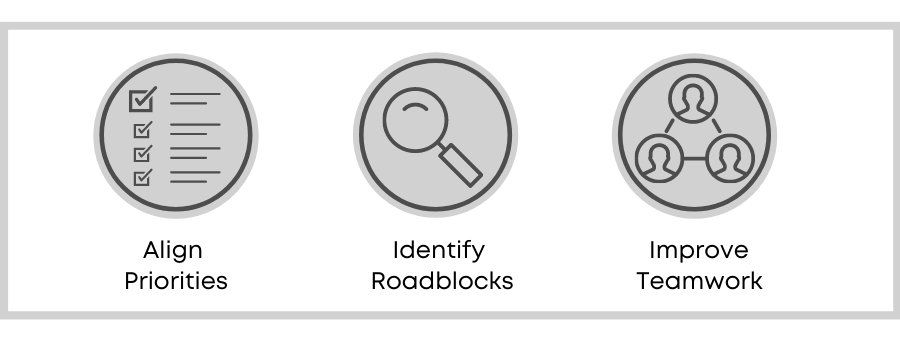Working from home can be both a blessing and a curse.
Sure, it’s great that you can start working even without getting out of your sweatpants or having to worry about traveling.
But, that also means you need to pay extra attention to how you’re managing your time to avoid procrastinating and continue to stay on top of your tasks.
Aside from that, working with a remote team can make it difficult to collaborate with the same efficiency as before, not to mention, it can cause your inbox to constantly be flooded with emails.
So, if you or any of your team members are struggling to keep up with their workload or failing to meet deadlines, you might want to try doing something called stand-up meetings.
What’s A Stand-Up Meeting?
A stand-up meeting is a 15-minute activity where you and your team gather to align your goals, report on your progress, and pinpoint any roadblocks you or your team might be facing.
Why is it called a stand-up meeting? It’s because, throughout the meeting, everyone has to remain standing up. Yep, we’re not kidding!

The idea behind this is that the strain from standing reminds everyone to keep the meeting brief and to the point.
As opposed to sitting, standing is also scientifically proven to keep people focused and attentive so they retain information better.
How Can A Stand-Up Meeting Help You?
By doing daily stand-up meetings, you and your team can help each other get a clearer understanding of what your priorities are and therefore, what each member needs to put at the top of their to-do list for the day.

It’s an excellent way for you and your team to stay up to speed on everyone’s progress and struggles and provide solutions to issues before they snowball into something more problematic.
How Do You Do A Stand-Up Meeting?
1. Pick a video conferencing app.
To start doing stand-up meetings, the first thing you need to do is find a video meeting tool.
Go for one that’s to navigate and has screen-sharing abilities so that everyone can easily present to the team any problems that they might need help with.

2. Decide on a meeting schedule.
For stand-up meetings, it’s ideal that you meet at least once a day before you begin working, but you can definitely adjust it according to your team’s availability.

If you agreed to meet every day from 8 AM to 8:15 AM, it’s important to start the meeting at 8 AM sharp whether or not the team is complete and remain within the 15-minute mark.
3. Always come prepared.
The meeting only lasts for 15 minutes so literally every second counts. Encourage your team members to prepare before the stand-up meeting starts to ensure that it stays brief and productive.


4. Stick with these 3 questions…
Here are the only three questions you need to ask:
- What have you accomplished since the last meeting?
- What do you plan to accomplish today?
- What issues are delaying your progress?
5. Keep answers short and concise.
Stand-up meetings aren’t the time for giving status reports, planning, problem-solving, or rambling about random topics.


While team members are encouraged to speak up about the problems that they can help solve during the meeting, all collaborations and brainstorming should be done after.
Stand-Up Meeting Best Practices
1. Time your meetings
One way to help you make sure that you don’t go over 15 minutes and everyone has an equal amount of time to speak is to use a timer for your meetings.

2. Keep your group small.
In a stand-up meeting, everyone is given their time to speak. If you have more than 15 people in your group, that leaves less than 1 minute of speaking time for each member.

3. No distractions.
When you’re doing a stand-up meeting, everyone should be 100% present and focused so it’s best to keep away from any distractions, like cellphones and TVs.

So are you planning to include stand-up meetings to your virtual collaboration strategy? You can learn more about it here!















